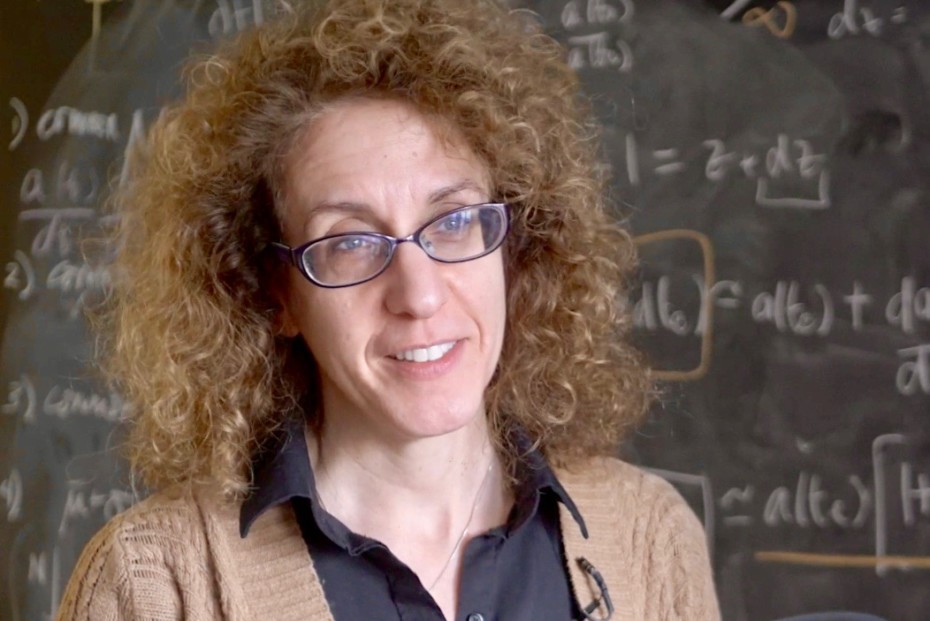
When Canada’s CHIME radio telescope was inaugurated two years ago, astronomers expected its unique design to help them tackle one of the most puzzling new areas of astrophysics: the fleeting extragalactic pulses known as fast radio bursts (FRBs).
It didn’t take long for CHIME to deliver. Its first observations, gathered over the course of just three weeks during the summer of 2018 and reported in Nature last January, revealed a total of 13 new FRBs – including the second repeating FRB ever recorded. And that was with the telescope in its test phase, operating at just a fraction of its full capacity. By last summer, the CHIME Fast Radio Burst project team had reported an additional eight repeating FRB sources. And with results continuing to pour in, astronomers around the world are eagerly anticipating more new findings from CHIME.
As a result, McGill University astrophysicist Victoria Kaspi – who leads the cross-Canada collaboration driving the project – has been named to Nature’s annual list of 10 “people who mattered” in science during the past year.
“It’s tremendously gratifying to have the project recognized by Nature, but the honour really goes to the entire CHIME FRB team across Canada,” Kaspi says. “This has been a truly collaborative effort. CHIME is providing valuable new clues that could help astronomers figure out what triggers these enigmatic bursts from distant galaxies.”
A cross-Canada collaboration
The CHIME project involves more than 60 scientists from McGill, the University of British Columbia, University of Toronto, National Research Council Canada (NRC), Perimeter Institute for Theoretical Physics, and several U.S. institutions.
CHIME, short for the Canadian Hydrogen Intensity Mapping Experiment, was originally designed to shed light on the history of the cosmos and the mystery of dark energy, by charting hydrogen gas over a good portion of the observable universe. But as work got underway on the telescope, it occurred to Kaspi and CHIME team members that the telescope’s unusual “half-pipe” design and advanced computing power could also make it a valuable instrument for hunting FRBs. Unlike conventional telescopes, which focus on narrow segments of the sky, CHIME scans much more broadly, enabling it to spot the elusive flashes from FRBs. Kaspi led the successful effort to obtain the resources required to make CHIME a world-class FRB detector.
“We designed CHIME to map the cosmos, to see a huge fraction of the sky at any instant, and piece together the entire overhead sky,” says McGill astrophysicist Matt Dobbs, whose Cosmology Instrumentation Lab helped spearhead development of the novel telescope. “It turns out that that experiment is perfectly suited also to look for changes on the sky – eruptions, bursts of radio light – that are the fast radio bursts we are measuring today.”
Hunting for FRBs

Adapting the telescope to search for FRBs also required developing sophisticated algorithms and software pipelines to sift through 130 billion bits of data per second in real time. Researchers from the CHIME FRB team (Kaspi included) literally helped wire the circuitry at the Dominion Radio Astrophysical Observatory, an NRC-operated facility in British Columbia’s Okanagan Valley, where the telescope was built with $16 million in funding – a fraction of the cost of other world-class radio telescopes. Funding for CHIME was provided by the Canada Foundation for Innovation and the governments of British Columbia, Quebec, and Ontario, with additional contributions from the Dunlap Institute for Astronomy & Astrophysics, the Canadian Institute for Advanced Research, the Natural Sciences and Engineering Research Council, the McGill Space Institute and the Trottier Family Foundation.
In addition, Kaspi’s team this summer received a US$2.4 million grant from the Gordon and Betty Moore Foundation in the U.S. for planning and preparation to build “outrigger” telescopes for CHIME in various parts of North America, to help pinpoint the location of FRBs and identify their origins.
In the past 12 months, CHIME has detected more FRBs than the total number observed previously. And the hunt for more is now in full swing.
On a recent Friday afternoon, Kaspi and her team of McGill postdocs and grad students gathered around a long conference table in the McGill Space Institute for a teleconference with their colleagues from across the country. The researchers spent an hour sifting through reams of data for clues that could help narrow down theories as to what in the universe causes FRBs.
“The postdocs and grad students on our team are doing a fabulous job of analyzing the vast amount of data that CHIME collects daily,” says Kaspi, who holds the Lorne Trottier Chair in Astrophysics and Cosmology at McGill and a Canada Research Chair in Observational Astrophysics. “It’s an exciting time for all the members of our team. We expect to publish more findings soon that could get us closer to solving the mystery surrounding FRBs.”
Watch the video below
